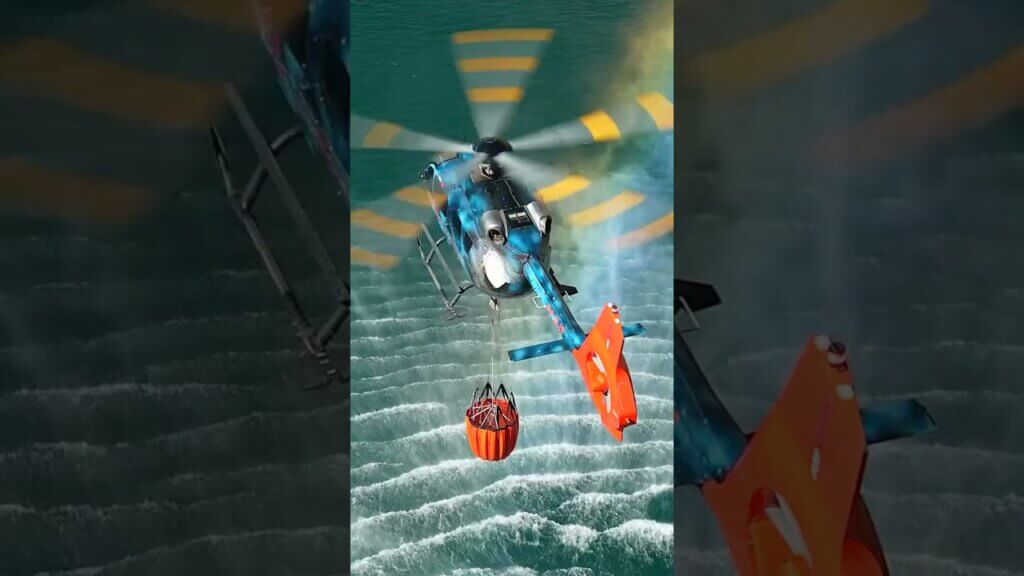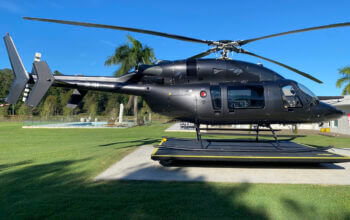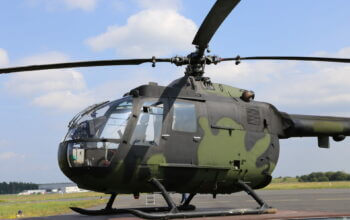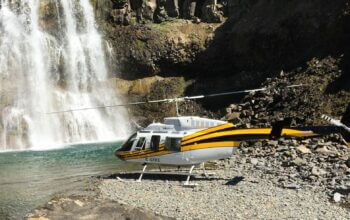The U.K.-based eVTOL developer Vertical Aerospace has unveiled its latest model, called “Seraph,” with a video showing the uncrewed aircraft in flight.
Seraph, which performed its maiden flight at Llanbedr Airfield in Wales on Aug. 22, can reportedly carry loads up to 250 kilograms (550 pounds) and reach speeds up to 80 kilometers per hour (50 miles per hour). The fully electric aircraft was built to test new technologies and systems for integration into an upcoming passenger model, expected in early summer 2020.
“Our ultimate goal is to get towards our certified aircraft, which will launch next year. And some things you just can’t do by computer simulation; sometimes you need to be able to build the actual aircraft to be able to learn from [it],” explained Vertical Aerospace communications manager Verity Richardson.

Richardson said the aircraft performed over a dozen test flights, both tethered and untethered, before the flight test campaign ended for the winter, allowing the team “to understand how various complex interactions work in real life. So we’ve learned a lot through the flight test program, and we have a good understanding of where we need to go from here.”
The design is a significant departure from Vertical Aerospace’s first full-scale aircraft, which flew in 2018. That vehicle had four ducted propellers arranged low around the fuselage. Seraph instead has six pairs of counter-rotating props mounted on arms extending from the roof of the aircraft, giving the vehicle much more redundancy.
“The first aircraft was effectively a proof of concept,” said Richardson. “[Seraph] is a lot more robust, so we’ve been able to do things like rotor-out testing, which would have been impossible on the first aircraft.” She said that when the flight test team performed that testing, “you could hardly tell — so it’s really great to know that those steps towards greater redundancy have paid off.”

Seraph also features a unique passive cooling system, which uses waste air from the rotors to push air over radiators that cool the battery. According to Richardson, the liquid-cooled system allows the aircraft to operate in a wider range of environmental conditions: “For instance, a lot of these aircraft can’t fly in damp weather, whereas ours, as long as it’s light rain, then we’re perfectly fine to fly in it. Which is fortunate, because Wales is not the sunniest of places!”
Seraph also has skids rather than wheels, although Vertical Aerospace said the aircraft has “a customizable design, meaning the aircraft can be made larger or smaller, fitted with wheels or floats to facilitate water landings.”
Although Seraph represents a significant evolution over the company’s proof-of-concept aircraft, Richardson said that next year’s passenger-carrying version will look much different still. “We want to be able to do intercity journeys, and for that you do really need a winged aircraft,” she explained.

That aircraft will carry four passengers plus a pilot, and will integrate a compact fly-by-wire computer from Honeywell under a strategic partnership agreement announced earlier this year. Richardson said that Vertical Aerospace anticipates a three-year certification process, and is working closely with regulators including the European Union Aviation Safety Agency to understand how existing guidelines apply to novel eVTOL types.
Simultaneous with the reveal of Seraph, the company also announced the acquisition of MGI, an F1 engineering consultancy led by British motorsport veteran Mike Gascoyne. Now called Vertical Advanced Engineering, the team “will apply the latest technologies and agile processes from F1 to the development of eVTOL aircraft,” including best practices for building lightweight composite structures, the company said. The acquisition brings the total Vertical team to more than 70 engineers and technical experts.
This story has been updated with new details and additional comment from Vertical Aerospace.








